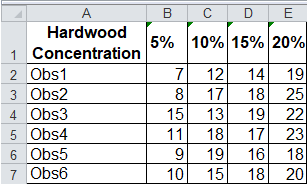

Handpicked Content: A Solution Template to Help in Hypothesis Testing From the t- distribution tables, one can find that the critical value of t is +/- 2.093. The critical t-value equals the value whose probability of occurrence is less or equal to 5 percent. The critical t-value marks the threshold that – if it is exceeded – leads to the conclusion that the difference between the observed sample mean and the hypothesized population mean is large enough to reject H0. Next we obtain the t-value for this sample mean:įinally, this t-value must be compared with the critical value of t. Where is the sample standard deviation or s. It can be estimated by the following equation: Because the population standard deviation is not known, we have to estimate the SE mean. In this formula, is the standard error of the mean (SE mean). Is that difference big enough to reject H0? In order to answer the question, the sample mean needs to be standardized and the so-called t-statistics or t-value need to be calculated with this formula: However, what is far enough? In this example, the difference between the sample mean and the hypothesized population mean is 6. Logically, the farther away the observed or measured sample mean is from the hypothesized mean, the lower the probability (i.e., the p-value) that the null hypothesis is true.

Null Hypothesis (H0): “True Population Mean Score is 90”Īlternative Hypothesis (Ha): “True Population Mean Score is not 90” Handpicked Content: The History of the Hypothesis Testing Flow Chart Could this sample originate from a population of mean = 90 grams? The organization took a small sample of 20 parts and found that the mean score is 84 grams and standard deviation is 11. Knowing this helps to answer questions like in the following example: A supplier of a part to a large organization claims that the mean weight of this part is 90 grams. The first step is to understand how the one-sample t-test works. The question that must be answered is whether is zero or not. However, if the population means are the same, will equal zero. Hence, will most often be unequal to zero. The correct question is whether the population means are the same (i.e., are the two samples coming from the same or different populations)? So the real question is not really whether the sample means are the same or different.

So How Does It Work?Īctually, if one subtracts the means from two samples, in most cases, there will be a difference. The rest of the article, however, discusses understanding the two-sample t-test, which is easy to use but not so easy to understand. If the two-sample t-test is being used as a tool for practical Six Sigma use, that is enough to know. To say that there is a difference is taking a 28.9 percent risk of being wrong. greater than 0.05 (or 5 percent), it can be concluded that there is no difference between the means. Handpicked Content: Using Efficient Process Tolerance and Mean Shift Testsĭifference = mu (A Sample) – mu (B Sample)ĩ5% CI for difference: (-1.53393, 4.63107) To perform this test, both samples must be normally distributed. Table 1: Pizza Company A Versus Pizza Company B Sample Deliveries This is the data collected from a sample of deliveries of Company A and Company B. The question being answered is whether there is a significant (or only random) difference in the average cycle time to deliver a pizza from Pizza Company A vs. Here is an example starting with the absolute basics of the two-sample t-test. It helps to answer questions like whether the average success rate is higher after implementing a new sales tool than before or whether the test results of patients who received a drug are better than test results of those who received a placebo. It is applied to compare whether the average difference between two groups is really significant or if it is due instead to random chance.

The two- sample t-test is one of the most commonly used hypothesis tests in Six Sigma work.


 0 kommentar(er)
0 kommentar(er)
